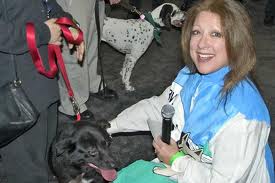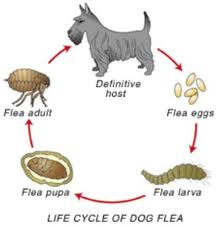I Cloned My Dog
George Semel
 Alexander Michael originally obtained Bob, the Chihuahua, when he was about three weeks old, outside of a grocery store. He didn't have time to look after him so he gave him to his good friend George Semel. Unfortunately one day during a walk, Bob was attacked by a Rottweiler and died at the age of two and a half years of age. Needless to say, George was very distraught over the incident.
Alexander Michael originally obtained Bob, the Chihuahua, when he was about three weeks old, outside of a grocery store. He didn't have time to look after him so he gave him to his good friend George Semel. Unfortunately one day during a walk, Bob was attacked by a Rottweiler and died at the age of two and a half years of age. Needless to say, George was very distraught over the incident.
George explained that he has tissue that is cryo-preserved from another dog that he has had since 2005, but he couldn't afford to clone that dog at that time. He said it was also in advance of the proper techniques to clone a dog. The tissue for this dog is still on hold.
The cloning techniques are far more advanced now, so George was able to clone Bob. The process allowed them to clone 10 million cells from Bob's tissue. The cloning was successful, and there are triplets of Bob, which was done in Korea with a surrogate mother. George states that the puppies all look genetically identical to Bob.
The cloning was not cheap, and George tells us that he had been sworn to secrecy about the amount he paid, but stated that, "It is an expensive proposition." There was never really a signed agreement for the cloning, and the Koreans surprised George with the triplets. George and his friend Alex even created a song, The Clone Song, to offset the cost of the process.
Because George wasn't able to test the DNA at the time the puppies were born to see if they were true clones of Bob, he just took the Koreans' word for it.
When asked why George didn't adopt one of the many homeless dogs waiting for homes, he stated that, "I was saving a saved animal that didn't get to be fully saved." He stated that he originally made a commitment to a saved animal.
When asked what dog cloning can lead to, with regard to female dogs that are kept in cages to be surrogates for these clones (much like puppy mills), George stated that the technique is currently being used in people and this is no different. For example, he states, a woman will carry a baby for another woman who can't have children and be paid for her services. But the difference is that these female dogs didn't ask for this kind of life!
George doesn't feel he played 'God," but felt that someone had to be adventurous enough to examine what the boundaries are and to push those boundaries. George hopes that one day humans will also be cloned, as he feels there is a place for that as well.
We received many calls during the interview. Some were for cloning, while others were against. What do you think? Would you clone your dog?
Elayne Boosler, Tails Of Joy
 Elayne Boosler has been a touring standup comedian since 1973. Born in Brooklyn, N.Y. right around the time the Dodgers were leaving, her first memories are of grown men crying. Not understanding, she felt responsible, and decided to go into comedy!
Elayne Boosler has been a touring standup comedian since 1973. Born in Brooklyn, N.Y. right around the time the Dodgers were leaving, her first memories are of grown men crying. Not understanding, she felt responsible, and decided to go into comedy!
But that's not all. Elayne has been an avid animal rescuer for many years. In 2001, she formed her own non-profit animal rescue and advocacy organization, Tails of Joy. They support the smallest, neediest rescues across the country, who don't get any funding. They also advocate for animal welfare laws, getting circuses to stop using elephants, etc.
If you want to donate than animal organization, Elayne encourages everyone to give to their local shelter, who need it the most. She feels that three ladies rescuing cats in Idaho do a lot more and get more bang for the buck than the larger organizations. If you don't know who to give to, go to her website, Tails of Joy, where you can find many small, local organizations, who do the hands on, back breaking dirty work.
She says, "Don't give to the big guys who have pensions and infrastructures and vacations and retirement..!" If you give to small shelters, the money goes to the animals directly to save them, while these big organizations only use about 2 cents from every dollar of your donation for the animals.
When Elayne is on tour, the proceeds from 100-percent of all her after-show merchandise is donated to several rescue organizations in each city in which she is appearing. The rescues also appear in show advertising, enjoy a free night of comedy, distribute their literature and get to meet the community. Many of these organizations continue to receive periodic donations from Tails of Joy.
Visit Website
Are Wildlife Preying on Your Pets? - Dr. Debbie
 As a veterinarian I used to think a dog fight was one of the worst things that could happen to a pet while out walking. But wildlife attacks on pets are a real and present danger. Remember the scene from the Sandra Bullock movie, The Proposal, in which Kevin, the American Eskimo puppy, is carried off by an eagle? Surprisingly, Boss, my 16-pound mixed breed dog, became a target of a flying predator not in remote Alaska, but smack dab in the heart of Las Vegas' suburbia.
As a veterinarian I used to think a dog fight was one of the worst things that could happen to a pet while out walking. But wildlife attacks on pets are a real and present danger. Remember the scene from the Sandra Bullock movie, The Proposal, in which Kevin, the American Eskimo puppy, is carried off by an eagle? Surprisingly, Boss, my 16-pound mixed breed dog, became a target of a flying predator not in remote Alaska, but smack dab in the heart of Las Vegas' suburbia.
During a walk at our community park before sunrise, I heard a loud beating of wings as a Great Horned Owl swooped down over Boss, my 16-pound terrier mix. My other dog Nikki, a Bouvier des Flanders, ran up to Boss and the owl flew off and retreated to a light pole and sat studying Boss' movements. Fearing the owl appeared ready for a second try, I snatched Boss in my arms and hightailed it out of there.
Boss was lucky to have the deterrent of an eighty pound doggie sister nearby. But not all pets get off so lucky when wildlife predators are concerned. Outdoor cats and dogs may disappear during the night falling victim to a suspected coyote attack. Small pets under 20-pounds can be whisked off by birds of prey. Stories of wildlife attacks such as these occur all the time and the internet reads of horrific stories by owners who lose their small pets to wildlife.
What Animals To Watch For?
Coyotes are found not only in rural areas, but also thrive in metropolitan areas. Mountain lion and bobcats are other predators that are a concern for homeowners in more remote areas or along the outskirts of towns. Birds of prey such as owls, hawks, and eagles are very capable hunters, are protective of nesting sites and can easily carry off small animals two to three times their body weight.
What Can You Do?
Be especially watchful near parks, golf courses or near natural paths that wildlife use as travel corridors, such as flood channels or washes. Remember that an abundance of prey animals like wild bunnies in your community means prime hunting grounds for urban predators.
Don't leave your pets out at night unattended and preferably escort them using a leash. Wildlife rarely will approach a small pet if it is near a human or other larger animals.
 Install motion activated lights on property.
Install motion activated lights on property.
Ensure all dog runs have a roof or fencing above to prevent predators from jumping over enclosure walls.
Building high fences and walls may seem like a solution, but predators can easily jump over these. Consider coyote fencing - a style of fencing that may help deter a predator from entering your backyard. Visit Coyote Roller - an ingenious and humane method to prevent a coyotes and other dogs from being able to get over the top of fence with rolling metal bars installed along fence line.
Avoid Attracting Prey Animals
Take steps to make your yard less attractive to nuisance animals like possums and raccoons as well as potential prey animals. Remove wildlife feeding stations like bird feeders. Secure garbage cans. Keep brush trimmed and landscape maintained to avoid hiding sites for animals. Avoid fruit producing trees that serve as food sources. Feed pets indoors to avoid leaving a food source outside for mice, rats or other critters.
Any Other Tools to Protect Pets?
Check out the Raptor Shield, a lightweight protective cape made of polycarbonate plastic - the same compound used in bulletproof shields. This dog vest product was developed to stop a bird of prey's sharp talons from penetrating into small pets.
 What To Do If Your Pet Is Targeted By Wildlife?
What To Do If Your Pet Is Targeted By Wildlife?
Make noise, wave arms and throw rocks to drive away animals. Carry a whistle, air horn or pepper spray for defense. Remember that some species of raptors are protected species and harassing or injuring them can result in fines.
Preventative efforts are far more useful than any steps you can take to spook away a predator after an attack occurs. Speak to your neighbors and share information if you spot coyotes or birds of prey in your neighborhood.
Don't get me wrong - I wish no ill will on nature's most efficient predators. I still find those soaring raptors breathtaking and I am awed by the coyote's adaptability, but from now on I'll prefer to watch nature's animal wonders with my little terrier guy safely seated on my lap.
Featured veterinarian known as "Dr. Debbie" on national pet radio program, Animal Radio. Ebook author of "Yorkshire Terriers: How to Be Your Dog's Best Friend"; "Pugs: How to Be Your Dog's Best Friend"; "Mini Schnauzers: How to Be Your Dog's Best Friend"; and "Shih Tzu: How to Be Your Dog's Best Friend." Dr. Debbie's books.
Visit Website
The Dogfather's Grooming Tip with Joey Villani
Lifecycle of Fleas
 Joey never tires of talking about fleas, because so many people have questions about these nasty little creatures!
Joey never tires of talking about fleas, because so many people have questions about these nasty little creatures!
Fleas have 4 life stages. They start off with the egg and then turn into larvae. The larvae looks like little worms, which are blind. They can live off of a pet and they will eat anything that's organic, such as food droppings or even fecal matter. After a few days, they pupate, which means they cocoon. The last stage is when they turn into an adult flea.
Fleas can live anywhere from 2 weeks up until a couple of months or so of age, depending upon the conditions. If the conditions are right; the temperature is between 70 and 80 degrees, they have host blood to live on; they can live up to two months.
Even if a flea only lives for two weeks, it can lay up to 500 hundred eggs. The eggs don't need to live on a pet to survive. They can live anywhere, like your carpet! Fleas are smart. They lay their eggs in batches, spreading them around to make sure that at least some of them will survive. When the eggs start to hatch, they wait for a vibration, which tells them something is around. They will then come out and attach themselves to the animal that is nearby.
Fleas also know when an animal is pregnant and gives birth. When a birth happens, the fleas know that there are now more hosts available
People think that just giving your pet a flea bath will take care of the entire problem. Not true! You need to take care of everything. This includes their bedding, a thorough vacuuming of the house and cleaning your car if they ride in it and even your yard.
If you don't take control of the situation, think about it. If a flea can lay 500 eggs in two weeks, think about what 500 fleas can do after two weeks. And then another 500 hundred after that, and so forth!
Animal Radio News with Stacey Cohen
 WalMart Horse A Victim of "Rumspringa" Fever
WalMart Horse A Victim of "Rumspringa" Fever
You can lead a horse to WalMart (then leave him there)! "Horse, 9, seeks loving home. Previous experience includes providing economical transportation for Amish owner. Will work for hay." That might be the resume for a horse that Humane Society officials nicknamed Wally, because he turned up tied to the buggy rail outside a WalMart in Middlefield, Ohio. It seems that an Amish teenager steered Wally to the store, unhooked him from his buggy, tethered him to the rail and never came back. Kindly WalMart staff looked after the standard bred steed until police came for him. During "Rumspringa," some Amish teens engage in very un-Amish behavior before choosing whether to remain in their community, or leaving, where they would be able to drive motorized vehicles. Could Wally's owner have come down with a bout of Rumspringa fever? Or was it just a case of putting the mart before the horse?
Should Groomers Be Licensed?
A Democratic State Senator from California proposed that all groomers be licensed. If adopted, California would become the first state in the nation to require vocational licenses for pet groomers. In addition to requiring that groomers pass a state-issued exam and pay a license fee of up to $350, the legislation calls for statewide standards governing everything from lighting to record keeping. Violating the law would be a crime punishable by fines of up to $2,000 and a year in jail. Supporters say the proposed regulations would hold groomers accountable and protect pets.
 Cemetery Welcomes Man's Best Friend
Cemetery Welcomes Man's Best Friend
Families have been known to skirt cemetery rules in trying to reunite Fido or Patches with their owners, slipping a tiny tub of ashes into a casket or sprinkling their remains at a grave site when no one's looking. But pet lovers don't have to be so sneaky anymore at Standing Rock Cemetery. The public cemetery, operated by trustees on behalf of Kent and Franklin Township, Ohio, allows burial of animal remains in a newly designated section of the cemetery. People may also be buried with the ashes of their pet in the area bordering the pet section. "I don't think people loved their pets less 50 years ago, but they take it a little more serious these days," trustee John Sapp said. "With our society moving in that direction, we thought it would be quite popular." It is rare to find a traditional cemetery that welcomes man's best friend.
 Listen to the entire Podcast of this show (#1191)
Listen to the entire Podcast of this show (#1191)





